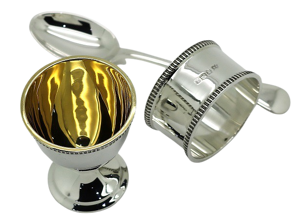Tavex uses cookies to ensure website functionality and improve your user experience. Collecting data from cookies helps us provide the best experience for you, keeps your account secure and allows us to personalise advert content. You can find out more in our cookie policy.
Please select what cookies you allow us to use
Cookies are small files of letters and digits downloaded and saved on your computer or another device (for instance, a mobile phone, a tablet) and saved in your browser while you visit a website. They can be used to track the pages you visit on the website, save the information you enter or remember your preferences such as language settings as long as you’re browsing the website.
| Cookie name | Cookie description | Cookie duration |
|---|---|---|
| tavex_cookie_consent | Stores cookie consent options selected | 60 weeks |
| tavex_customer | Tavex customer ID | 30 days |
| wp-wpml_current_language | Stores selected language | 1 day |
| AWSALB | AWS ALB sticky session cookie | 6 days |
| AWSALBCORS | AWS ALB sticky session cookie | 6 days |
| NO_CACHE | Used to disable page caching | 1 day |
| PHPSESSID | Identifier for PHP session | Session |
| latest_news | Helps to keep notifications relevant by storing the latest news shown | 29 days |
| latest_news_flash | Helps to keep notifications relevant by storing the latest news shown | 29 days |
| tavex_recently_viewed_products | List of recently viewed products | 1 day |
| tavex_compare_amount | Number of items in product comparison view | 1 day |
| Cookie name | Cookie description | Cookie duration |
|---|---|---|
| chart-widget-tab-*-*-* | Remembers last chart options (i.e currency, time period, etc) | 29 days |
| archive_layout | Stores selected product layout on category pages | 1 day |
| Cookie name | Cookie description | Cookie duration |
|---|---|---|
| cartstack.com-* | Used for tracking abandoned shopping carts | 1 year |
| _omappvp | Used by OptinMonster for determining new vs. returning visitors. Expires in 11 years | 11 years |
| _omappvs | Used by OptinMonster for determining when a new visitor becomes a returning visitor | Session |
| om* | Used by OptinMonster to track interactions with campaigns | Persistent |
| Cookie name | Cookie description | Cookie duration |
|---|---|---|
| _ga | Used to distinguish users | 2 years |
| _gid | Used to distinguish users | 24 hours |
| _ga_* | Used to persist session state | 2 years |
| _gac_* | Contains campaign related information | 90 days |
| _gat_gtag_* | Used to throttle request rate | 1 minute |
| _fbc | Facebook advertisement cookie | 2 years |
| _fbp | Facebook cookie for distinguishing unique users | 2 years |
Silver Coins' Prominence in Births and Christenings

The tradition of gifting silver to infants has been a symbol of wealth, protection, and well-being for centuries. Originating in ancient times, this custom was famously echoed in the biblical story of the Magi’s gifts to Jesus, setting a precedent for gifting precious metals to newborns.
Over time, this practice evolved from religious tokens to cherished keepsakes like silver spoons in the Tudor era and diverse silver items in Victorian times. Today, specially minted silver coins are given during births and christenings worldwide, symbolising good health and prosperity.
This article explores the evolution of this tradition and cultural significance, from its ancient roots to its modern incarnations, highlighting its significance across different cultures and eras.
From the UK’s silver sixpence to global customs like China’s Zhua Zhou ceremony, we examine how gifting silver to infants is a universally cherished practice, representing collective wishes for a newborn’s bright future.
History Behind Gifting Infants Silver

Ancient Customs and Beliefs
Since ancient times, silver coins have been valued gifts, symbolising wealth, prosperity, and protection. In many cultures, giving silver coins to infants or during christenings was believed to bring good luck and ward off evil.
This tradition is rooted in ancient practices, including the biblical story of the Magi, where one Wise Man’s gift of gold to Jesus inspired the custom of presenting precious metals to newborns.
Over time, silver became the preferred metal for such gifts.
It’s widespread availability, coupled with cultural associations of purity and clarity, made silver an ideal symbol for blessings and prosperity.
The transition from gold to silver reflects both the practicality and the evolving symbolic significance of these metals in different eras. Thus, the ancient custom of gifting silver coins has been a longstanding tradition to celebrate new life and wish for a prosperous future.
Evolution Over Centuries
Over the centuries, this practice has evolved. What once might have been a religious or superstitious act has now become a cherished cultural tradition. In modern times, these coins often bear special designs commemorating the occasion.
During the Tudor era, silver spoons became the gift of choice, symbolising wealth and prosperity. This tradition evolved during the Victorian era to include a wider variety of silver items, such as trinkets, cups, and rattles, depending on the type of present or gift required.
Silver Coins in Modern Christenings and Births

In modern celebrations of births and christenings, silver coins are cherished for their symbolism of health, prosperity, and a bright future. These coins, often passed down as family heirlooms, feature intricate designs with motifs like doves and lambs, symbolising purity and innocence.
Their artistic and symbolic value enhances their appeal as keepsakes.
The popularity of limited edition and year-specific silver coins has grown, with these items prized for their uniqueness and historical significance, and quality and authenticity. Not only are they valued as collector’s items, but they also serve as wise investments due to the intrinsic value of silver.
This blend of tradition, artistry, and practicality makes silver coins a meaningful gift, representing a connection between past traditions and the child’s future.
Significance in Different Countries

The UK
In the UK, the practice of giving silver coins to infants, particularly during christenings, symbolises good luck, health, and wealth for the baby.
The silver sixpence, introduced by the Royal Mint in 1551 during King Edward VI’s reign, quickly became a symbol of prosperity and good fortune, and continues to hold significance today with having a significance in achieving success.
In some UK towns and villages, it’s common to place silver or gold coins on top of a baby’s pram as it is pushed through the streets, wishing well for the baby and bringing luck to the giver.
Abroad
Internationally, similar traditions exist with local variations. In China, the Zhua Zhou ceremony involves offering various objects to a one-year-old child, including coins, to predict and bless the child’s future. In Armenia, a related ceremony called Agra Hadig occurs when the child gets their first tooth.
In Trinidad and Tobago, placing money in the hand of a newborn is a customary gesture to wish good fortune for the child’s future.
Takeaways
The tradition of gifting silver coins to infants during births and christenings holds deep-rooted cultural and historical significance. Evolving from ancient practices to modern-day customs, it symbolises prosperity, health, and attracts luck for the child, while also serving a practical purpose in establishing a financial foundation and an initial investment portfolio.
This tradition, while varying in form, is a cherished practice in many cultures worldwide, reflecting the universal long term desire to wish well for new life.


















